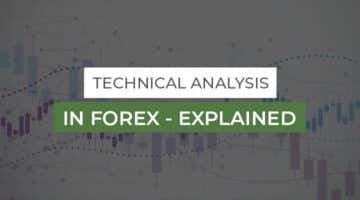Basis Points Explained

In this article
Basis Points is also known as bips or bps. It functions as a measurement unit for describing the overall percentage change in any financial instrument. You can also use the basis points for the measurement or rate of change in the index or other benchmarks.
We would like to mention that one basis point equals 0.01% (1/100th of a per cent) or 0.0001 in the decimal form. In the same way, a fractional basis point, i.e., 1.5 basis points, is equal to 0.015% or 0.00015 in the decimal form. These basis points refer to changes in the interest rates or even the bond yields in most cases.
Understanding the concept of basis points
To help you know the practical usage of the basis points, here we have a simple example for you to see. In 2017, the Federal Open Market Committee (FOMC) had increased the benchmark rate to almost 25 basis points from 1% to 1.25%. This generally means that 0.25% percentage points somehow increased the rates from the range of 1% to 1.25%.
Inside the bonds market, the basis points are generally used for the yields which the fixed income instruments pay the investors. So, for instance, if the bonds yield increases from 7.45% to 7.65%, it has seen a positive change of 20 basis points.
This metric is generally used for the loans and the bonds to fully signify the change in percentage or the yield spreads in the financial instruments. Somehow this might happen due to the emerging differences in the material interest rates, which are less than one per cent.
One basis point is fully equivalent to the 0.01 per cent or even the 1/100th of the 1 per cent. The particular succeeding points will move up gradually to almost 100%, equal to the 10000 basis points. See the table below:
| Percentage | Basis Points |
| 0.01% | 1 |
| 0.1% | 10 |
| 0.5% | 50 |
| 1% | 100 |
| 10% | 1000 |
| 100% | 10000 |
Conversion between basis points & percentage
Do you want to know how you can convert several basis points into percentages? Is it hard for you to convert a percentage to basis points without using a chart or the conversion template? If yes, then review the following:
- Basis points to percentage – You have to divide the points by the number 100
- Percentage to basis points –Just multiply the percentage by the number 100
Why should you use BPS as an analyst or investor?
A few of the main reasons analysts and investors prefer to use BPS points are:
- For describing the changes in the incremental interest rate of the securities and in the interest rate reporting.
- For avoiding any confusion or ambiguity in the absolute interest rates. This is important when the difference rate is around less than 1 per cent. But the amount has some material importance.
To discuss the interest rate with an increase of 11-12%, some investors might use the absolute method. They do state that there has been an increase of 1% in interest rate. You can even count it as 0.01%. But some prefer to use the comparative method by describing a 9.09% increase in the interest rate. With the help of basis points, you can eliminate this whole confusion by figuring out that there has been a slight increase across the real interest rate of the 100 basis points.
On what instruments can you apply BPS?
Usage of the basis points is all applied to the interest rates and yields. But somehow, they can often be applied to a specific change in the asset value. For example, this can be percentage changes of the stock values. A few of the common examples are:
- Interest rate derivatives
- Treasury bonds
- Credit derivatives
- Corporate bonds
- Equity securities, including common stock
- Debt securities, including mortgage loans
Why should you use basis points and not the percentage?
The basis point is generally known as the smallest measurement for quoting any change to the interest rates or the yields on bonds. You can even use it for describing the one-hundredth of the percentage point (0.01%). If less than 1% differences are meaningful, utilizing the basis point is the best option and not the percentage. It will have a tangible effect. But this whole effect will be temporary and will keep on changing with time.
The use of basis points is also common when getting into the discussion of investing or borrowing. For the stock market holders, this term is extremely relatable. The Fed’s benchmark rate, where it influences the rates on mortgages and credit cards and a few other loans, is usually changed to almost 25 basis points at one time.
Key takeaways
| ● Using basis points, you can avoid any ambiguity arising during the change in yields or the interest rates.
● You can use the basis points when differences of less than 1% are completely meaningful. ● These basis points are even used when referring to the actual cost of the mutual funds and the exchange-traded funds. |
Frequently asked questions-FAQs
How much are the 50 basis points?
We have already mentioned that one basis point is equivalent to 0.01%. So it is evident that a 50 Basis point is equal to 0.5 per cent.
What percentage is the 200 basis points?
It is 2 per cent. For instance, 50 basis points are equivalent to one-half of the 1 per cent, so the 200 basis points are equal to 2 per cent.
How much are the 0.5 basis points?
The 50 basis points are equivalent to the 0.5%, in which the 1 basis point is at the value of one-hundredth of the 1%. You can even count it as 0.01%. For instance, if the stock option has a worth of $60000 which has increased by 50 basis points, then its overall value has increased to $300 and is now settled at the worth of $60300.
Bottom line
We hope that this guide would have instead become so easy for you to know the concept behind basis points. To understand the overall change in any financial instrument, considering using the “Basis Points” measurement unit.
Jason Morgan is an experienced forex analyst and writer with a deep understanding of the financial markets. With over 13+ years of industry experience, he has honed his skills in analyzing and forecasting currency movements, providing valuable insights to traders and investors.
Forex Content Writer | Market Analyst
Relevant Posts

What is a Pipette in Forex?
[top_three_brokers] When we get into a conversation about Forex trading, you will come across different…
Read more

What is Free Margin in Forex?
[top_three_brokers] When borrowing money from your broker, it gets referred to as 'trading on margin.…
Read more

How does a No Deposit Bonus Work?
[top_three_brokers] Who doesn't love free cash! And what if you can get that free cash…
Read more

Market Fundamental Analysis
[top_three_brokers] Fundamental analysis may seem like a thing that your economy teacher yelled at you…
Read more

How to Start Forex Trading?
[top_three_brokers] Your quick guide to Forex trading in South Africa, answering the big question on…
Read more

What is Technical Analysis in Forex – Explained
[top_three_brokers] The most common question that pops up in a new trader head is, "what…
Read more

What is a Pip in Forex and How Much are They Worth?
[top_three_brokers] Learn what is a pip in forex A commonly asked question, what is a…
Read more

Forex Trading Strategies
[top_three_brokers] Did Caesar invade Gaul without a strategy? No, he was a cunning general and…
Read more

Best Trading Platforms Reviewed
[top_three_brokers] Naturally, many traders are interested in learning about the best trading platform. One of…
Read more

Forex Trading in Namibia
[top_three_brokers] The majority of beginner traders are charmed by stories of successful forex traders in…
Read more

What is a Pipette in Forex?
[top_three_brokers] When we get into a conversation about Forex trading, you will come across different…

What is Free Margin in Forex?
[top_three_brokers] When borrowing money from your broker, it gets referred to as 'trading on margin.…

How does a No Deposit Bonus Work?
[top_three_brokers] Who doesn't love free cash! And what if you can get that free cash…

Market Fundamental Analysis
[top_three_brokers] Fundamental analysis may seem like a thing that your economy teacher yelled at you…

How to Start Forex Trading?
[top_three_brokers] Your quick guide to Forex trading in South Africa, answering the big question on…

What is Technical Analysis in Forex – Explained
[top_three_brokers] The most common question that pops up in a new trader head is, "what…

What is a Pip in Forex and How Much are They Worth?
[top_three_brokers] Learn what is a pip in forex A commonly asked question, what is a…

Forex Trading Strategies
[top_three_brokers] Did Caesar invade Gaul without a strategy? No, he was a cunning general and…

Best Trading Platforms Reviewed
[top_three_brokers] Naturally, many traders are interested in learning about the best trading platform. One of…

Forex Trading in Namibia
[top_three_brokers] The majority of beginner traders are charmed by stories of successful forex traders in…


